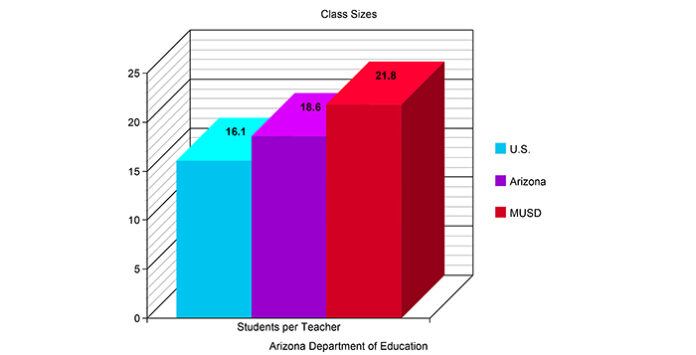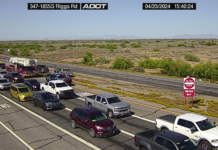
On the eve of a national election voting Americans who have yet to cast an early ballot will soon approach polls all across the country to decide on what some are considering to be one of the most divisive contests in American political history — Clinton or Trump.
At both the state and federal levels, Arizonans have the potential to make history and turn their traditionally red state into a blue one. They also have the potential to introduce dramatic socioeconomic changes in the form of recreational marijuana legalization and an increase in state minimum wage to $12 an hour by the year 2020.
Tuesday, Maricopans will be deciding these and other measures that may have grand effects on the government and education systems alike. One such measure is the proposed education budget override.
The Maricopa Unified School District override is designed to add technological resources, staff and faculty. Residents in Maricopa have become aware of the budget woes within the school system, and some have begun to take cautionary measures to guarantee their children receive a quality education.
Speaking on terms of anonymity a parent of a Santa Rosa Elementary student informed InMaricopa his child was in a classroom of 45 students with only one teacher and no aide. He said after it became clear their child’s grades began to suffer as a result of the overcrowded classroom they began considering alternatives, such as home school.
Superintendent Steve Chestnut doesn’t deny there is a problem, and recognizes that teachers in the district are on average instructing classes larger than normal.
“Class size is a big deal in our district and it’s larger than we want it to be,” Chestnut said. “That’s one of the primary reasons we have an override on the ballot.”
The override, in his view, will essentially pad the school district’s budget so it can hire as many as 50 new teachers to accommodate the excess of students. With a larger faculty the district will not only be able to reduce the student to teacher ratio in core curriculum classes but also be able to offer additional elective classes at the secondary level.
“It is true that we have some really large classes,” Chestnut said. “I get it, but we can make them smaller.
In 2015 Arizona’s public schools had an average classroom size above the national average of 16.1 students per teacher, with 18.6. That same year, MUSD saw teachers instructing classrooms with an average of 21.8 students. For the 2016-17 school year so far, the average class sizes can be as high as 33 students in some high-school level core classes, and as low as 22 in some first grade classes.
Some education critics cite graduation rates to grade the effectiveness of educational institutions, and then by comparing those numbers with teachers’ incomes, correlate a causality. However, statistics show this may not be true.
In 2015 MUSD had a graduation rate at 85 percent, 9 percent higher than the national average, and an average annual teacher’s salary of $45,262, an amount almost on par with the state average of $46,000. In comparison, Arizona’s neighbor to the north Nevada had a graduation rate at 71 percent in 2014, almost 10 percent less than MUSD, and paid its teachers on average 20 percent more, $55,000 annually.
The district claims the expanded budget will bring new teachers but it will also allow for the hiring of more support staff, like counselors and librarians, and will include money to aid the development of technological learning measures which may have a greater bearing on the quality of education than salaries alone. This extra money plays into what is arguably the most import number in the equation — per pupil spending.
According to the Arizona Auditor General’s annual report for 2015, per pupil spending within the MUSD was $300 less than the Arizona state average of $9,057. Furthermore, a 2015 report from the National Education Association puts the national per pupil spending average at almost $12,000. Nevada, by comparison, spends on average $8,411 per student, $300 less than Arizona.
If the override passes, Chestnut believes it’s easy to see how it will affect students. He said “$1.3 million, divide that by 6,500 students, that’s $200 per student.”
This year’s heated election cycle has pushed the topic of education to the back burner for many Americans, but for Maricopans it still could lie at the forefront of their agenda.







![Who’s the Best Mom InMaricopa? Nominate now! Marlene Marshall, Christina Olivares, and Meghan Bremer. [Bryan Mordt]](https://www.inmaricopa.com/wp-content/uploads/2023/05/BCM_8465-218x150.jpg)





![Alleged car thief released without charges Phoenix police stop a stolen vehicle on April 20, 2024. [Facebook]](https://www.inmaricopa.com/wp-content/uploads/2024/04/IMG_5040-218x150.jpg)



